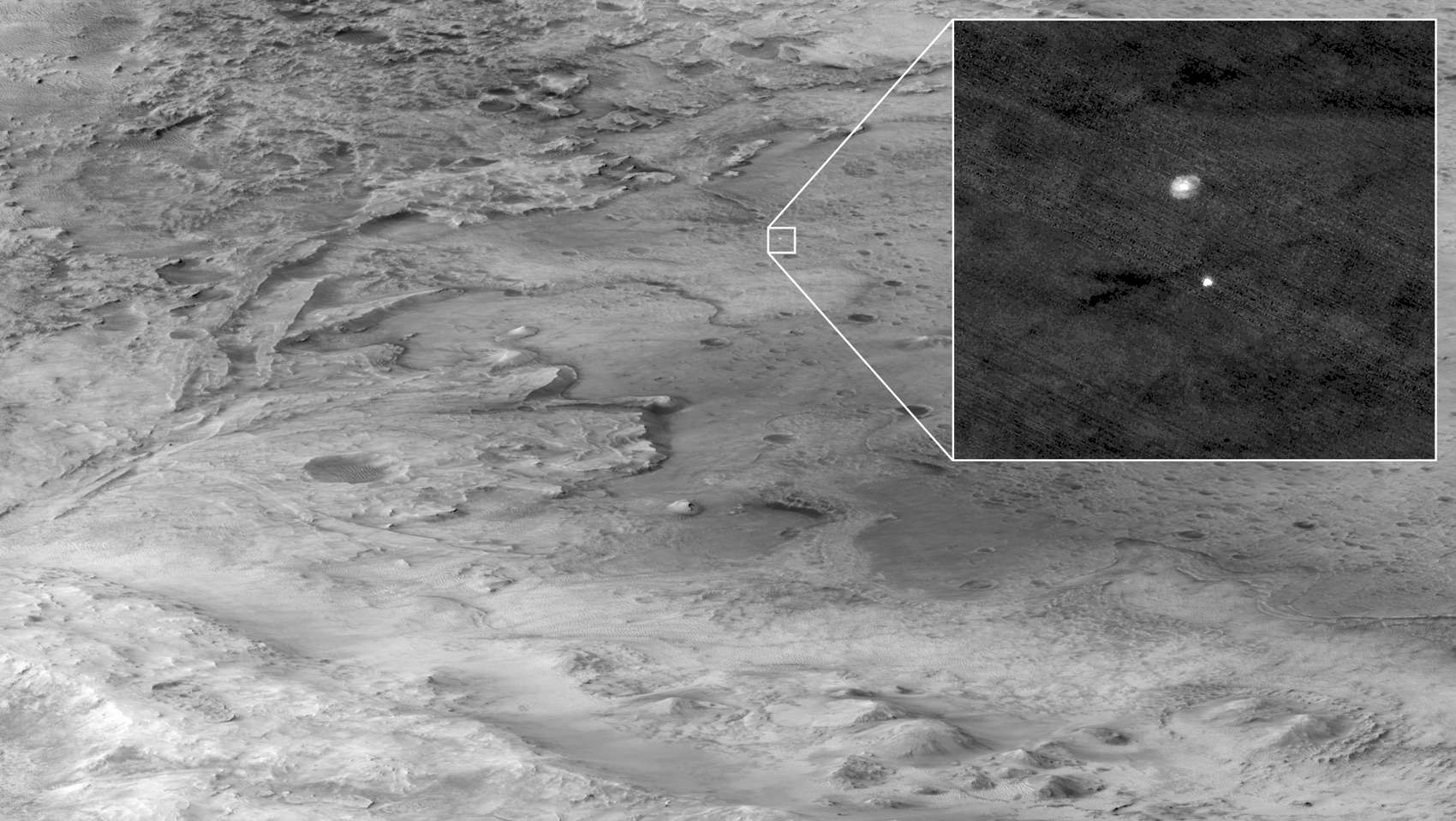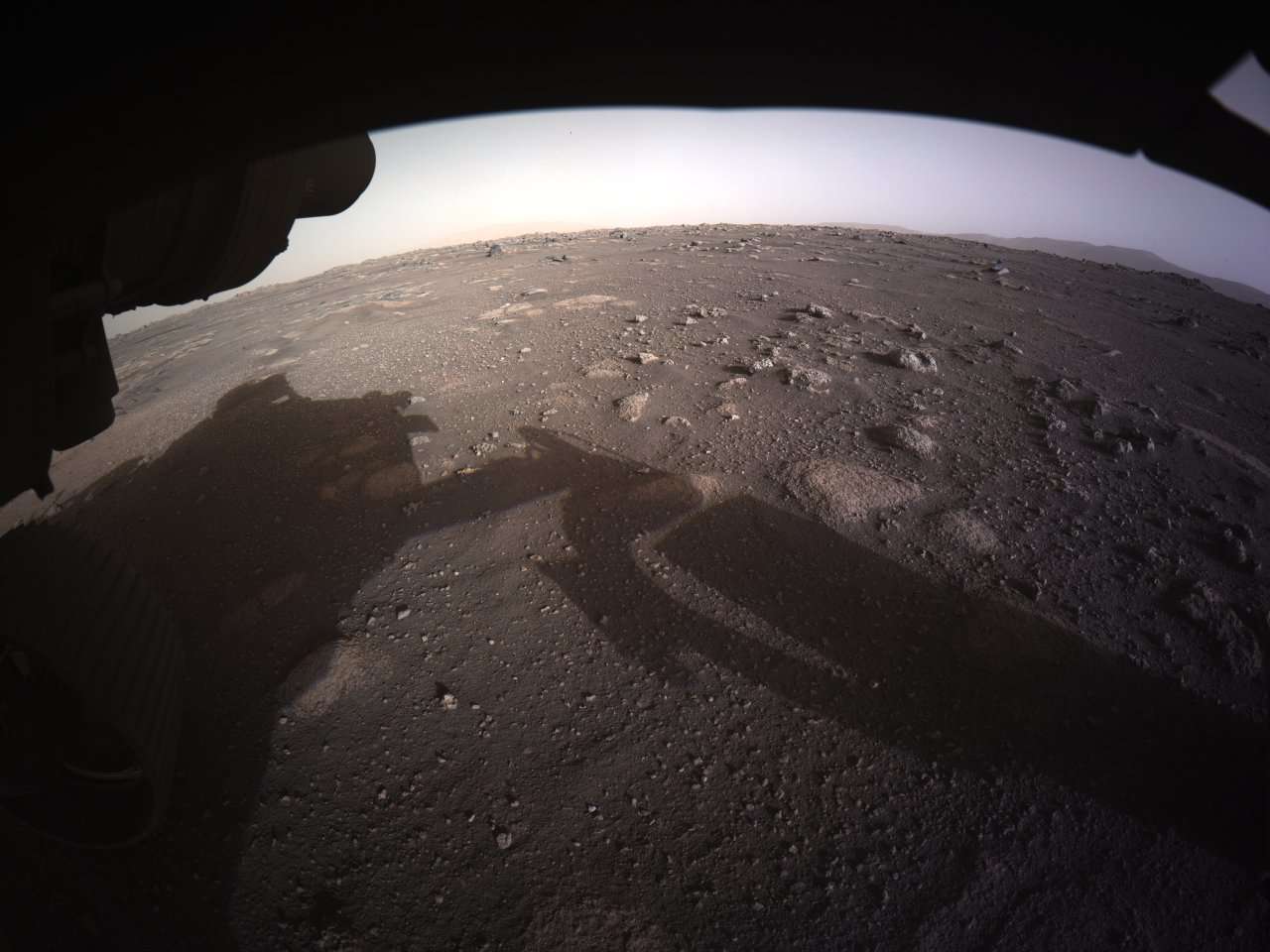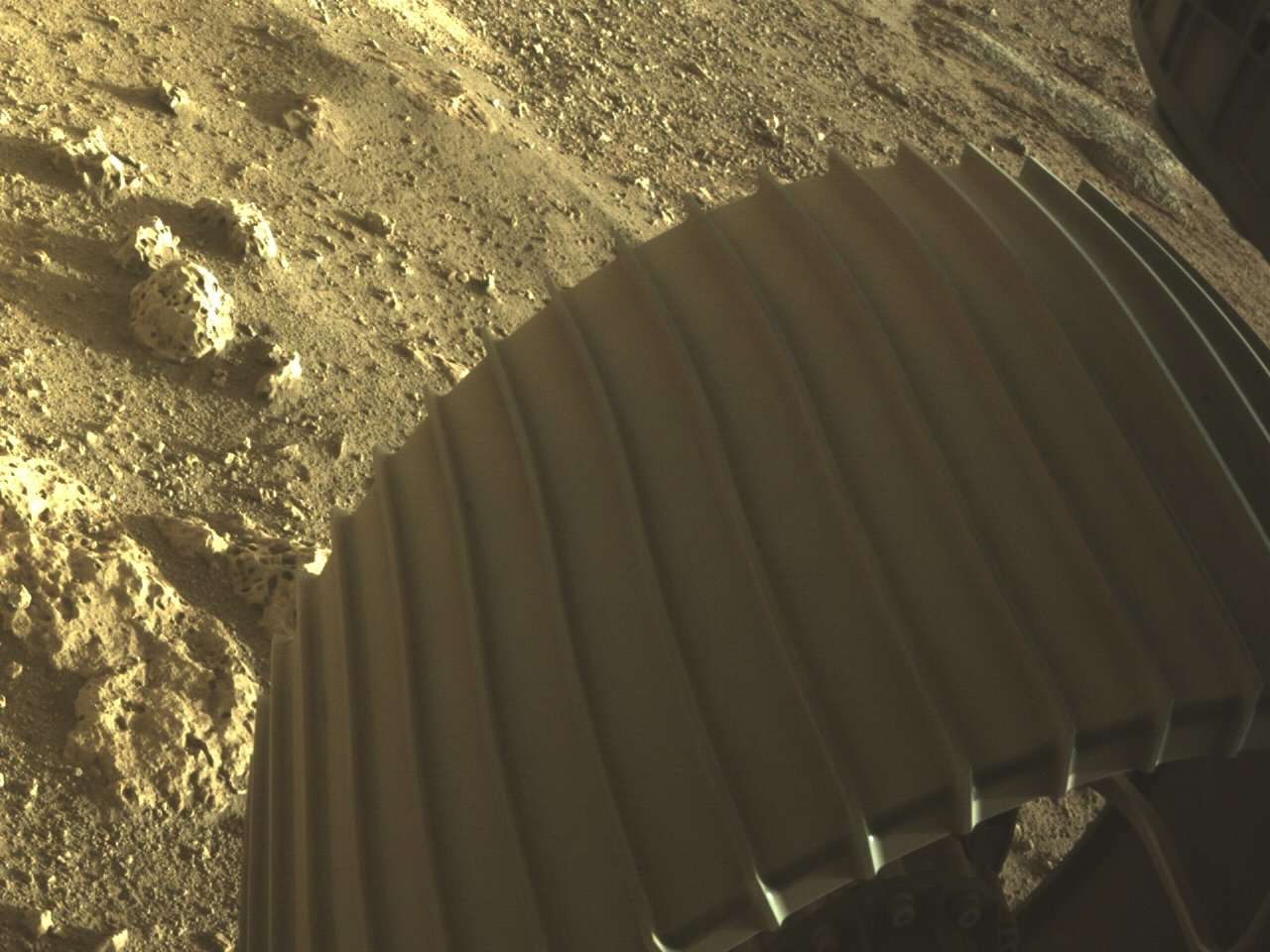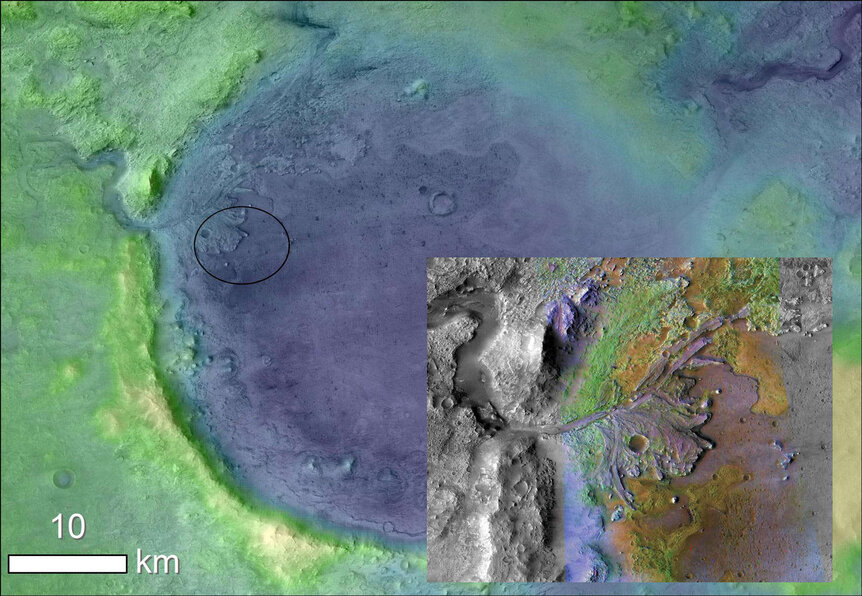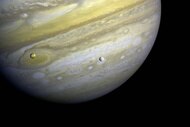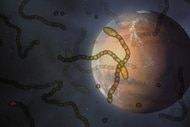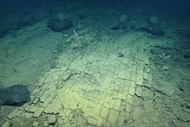Create a free profile to get unlimited access to exclusive videos, sweepstakes, and more!
See the first *incredible* images from the NASA rover Perseverance on Mars!
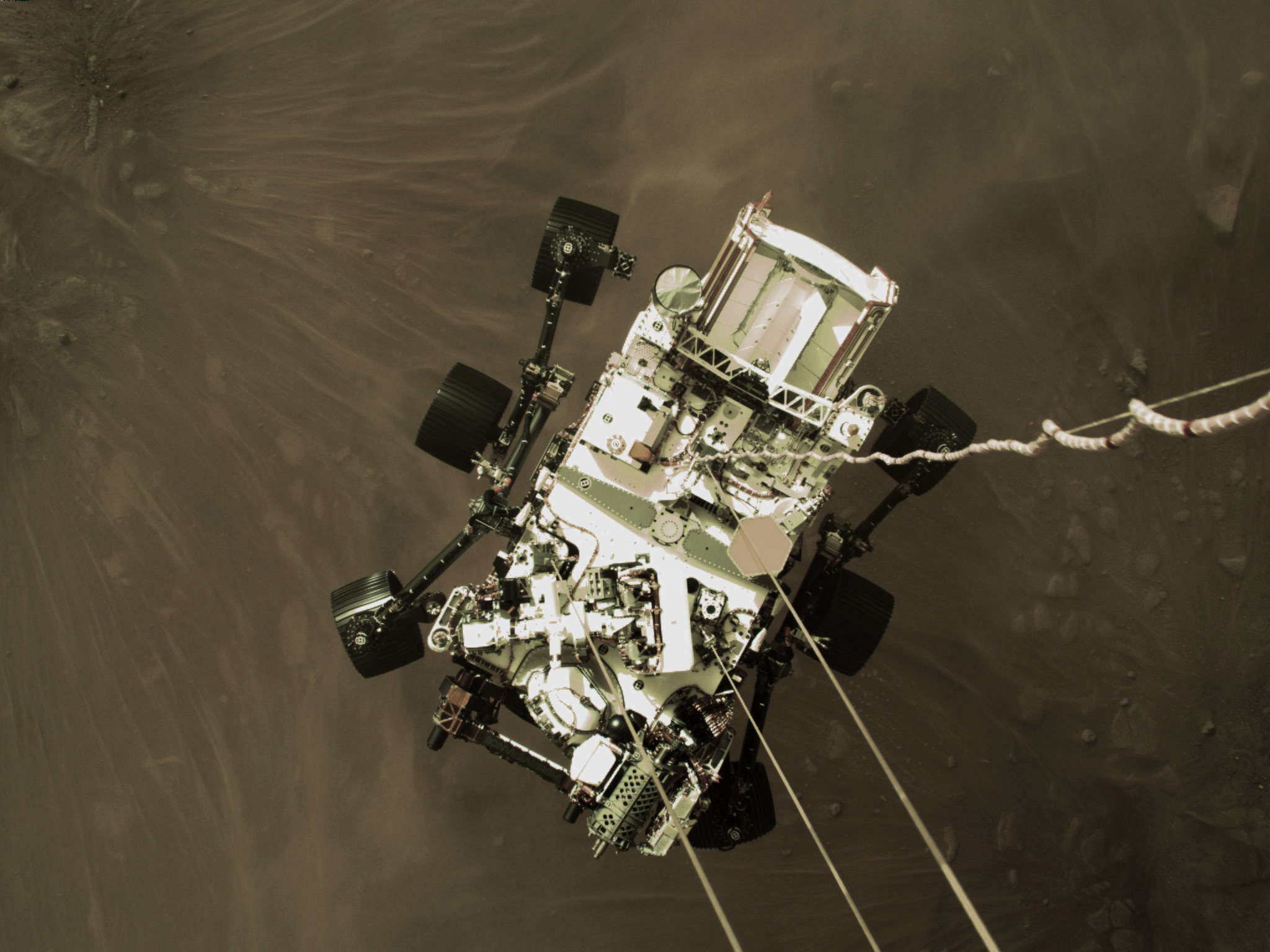
On Feb. 18, 2021 at 20:55 UTC, the Perseverance rover touched down on the surface of Mars.
The flight down was successful and, by all accounts, picture-perfect. The rover landed in the 50-kilometer-wide Jezero crater, within about a kilometer of the “bull's-eye” targeted.
The first images are now being sent to Earth, and oh my, what images they are.
This one is just spectacular. A jaw-dropper.
It shows the rover hanging suspended by cables under the rocket-powered sky crane with its wheels about two meters from the surface of Mars! This was taken by a downward-pointing camera on the sky crane.
To get to the surface, the rover, tucked into a capsule, first rammed through the Martian atmosphere, slowing from 20,000 kilometers per hour to 1,500. Then it slowed via parachute until it was just 20 meters or so off the surface. The sky crane then kicked in, its rockets slowing the descent to a crawl, so it could lower the rover all the way to the surface. (Once down, the cables disengaged and the crane flew away to safe spot some distance away.)
So that photo shows the rover over the surface, moments before making contact. Nothing like this has ever been seen before. This is the first time cameras were mounted on the Entry, Descent, and Landing (EDL) system in this way.
Note that you can see tendril-like swirls on the surface. Those are almost certainly dust being blown around by the rocket plumes from the sky crane! Just amazing.
Soon, we can expect more images like this and even video showing the descent.
This image was taken by the Mars Reconnaissance Orbiter from orbit about 700 kilometers away from Perseverance, showing it hanging below the supersonic parachute in the second part of EDL. Think about that: A robotic orbiter took an image of a robotic rover on its way down to the surface, and all this happened over 200 million kilometers from Earth.
Incredible.
This is the first color image Perseverance took from the surface. It was taken by one of the hazard cameras located low on the deck of the rover, designed to look ahead and back to check for rocks, ditches, and other mobility hazards. It can also be used to get context of where the rover is located. The first image we saw from the rover was the same scene, but taken before the dust cover protecting the camera during EDL was removed. That image had a lower resolution (the hazard cameras are 20 megapixels!) and was in grayscale (or black and white) to save bandwidth sending it to Earth so we could get it quickly.
This is from the camera facing forward, looking southeast. You can see the rover's shadow, pebbles and rocks, some hills in the distance, and the relatively flat surface where the rover landed. The ground is quite flat there; the rover is tilted by 1 degree, which is only a slight angle. Perfection.
This image is a piece of a much larger image showing one of the rover's wheels with some rocks around it. These rocks are interesting; note that they have lots of holes in them. They may be basaltic — that is, volcanic ... but they might be eroded sedimentary rocks. We know the Jezero crater was a huge lake billions of years ago — that's why it was chosen as a landing site — but the rover landed at what's called a geologic contact point, where two different kinds of geological formations come together. In this case there's some volcanic and some sedimentary features, so it's not obvious to which these rocks belong.
There's still a lot to do before the rover can rove. The big mast (the neck and head) of the rover hasn't been raised yet, and many of the other instruments on board need to be turned on as well. Lots of checkout to do to make sure the rover is healthy (so far everything they've checked is doing well) and ready to move.
I'm very excited to see the enormous sediment delta to the northwest, where a river flowing into the crater dumped silt. If there's evidence of ancient microbial life on Mars, that's my bet on where it is. I don't know how long it will be before the rover gets there (weeks at least, certainly, even moving at 100–150 meters a day); they still have to map out the route to take. But when it gets there, well. That should be something.
More images will be coming, and video (!!), so stay tuned. It took eight years to design, build, launch, and get this magnificent machine to Mars ... but the mission has only just started.
